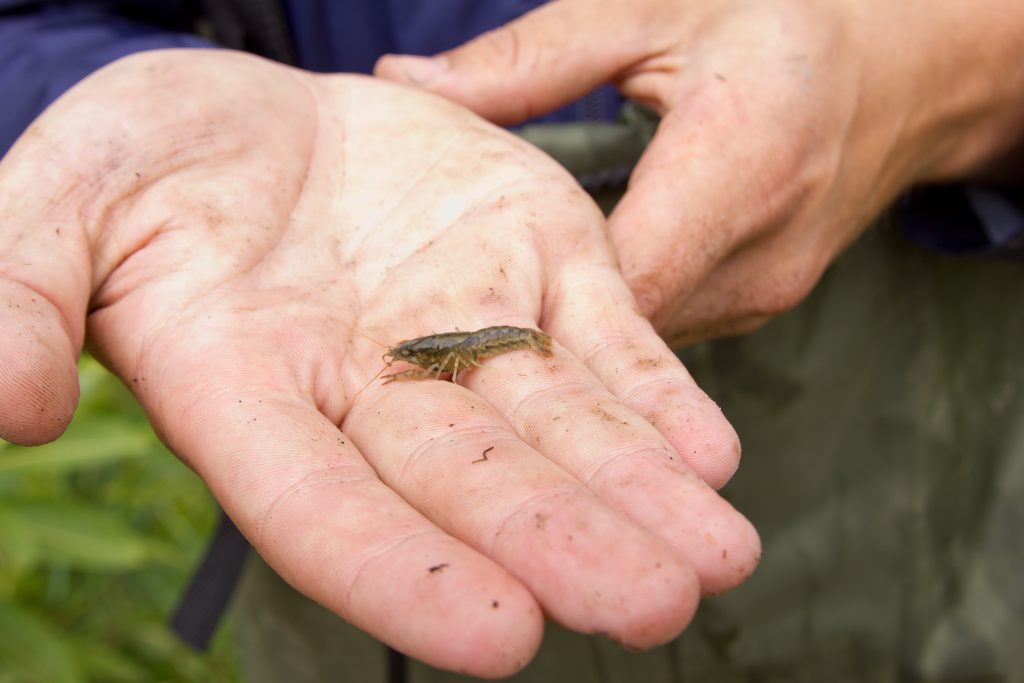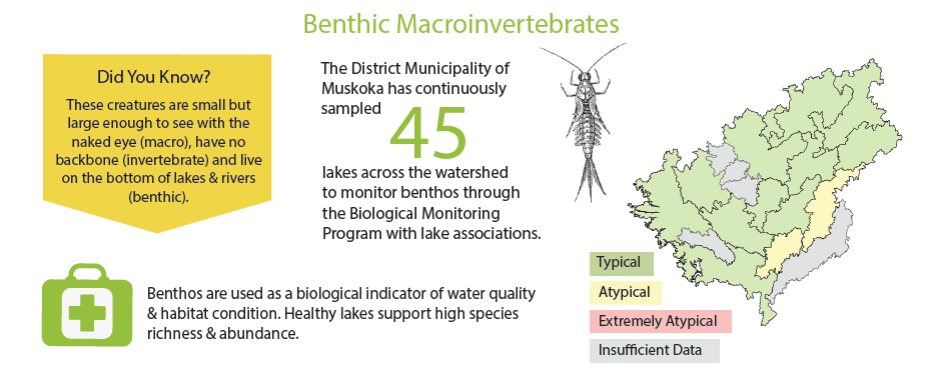Without bugs, much of the life in Muskoka’s lakes would diminish

Muskoka Watershed Council’s 2018 Muskoka Watershed Report Card was launched in July. It features 8 indicators of environmental health: total phosphorus, calcium concentrations in lakes, benthic macroinvertebrates, species at risk, invasive species, climate change, interior forest and fragmentation.
As the warm weather arrives; foliage begins to bloom, the birds start chirping, and of course, the bugs become fierce.
Muskoka has some of the most beautiful lakes and rivers in the world, and at the bottom of these lakes are bugs — also known as benthic macroinvertebrates (or benthos). These bottom-dwelling critters, which consist of insect larvae, beetles, snails, clams, worms, dragonflies, mosquitoes and mayflies, can be found attached to rocks, logs, sticks and vegetation, or burrowed into the sediments.
What exactly does the name “benthic macroinvertebrate” mean, anyways? Let’s break it down: benthic = bottom, macro = small (but large enough to see with the naked eye) and invertebrate = without a backbone.
These bugs are an amazing biological indicator of lake health. They provide information on our lakes because they are sensitive to changes in water quality. Too many or too little of a certain species can indicate the quality of water and the surrounding aquatic habitat. They also spend the majority of their lives in the same area of water, they are easy to sample, and different species have different tolerances to disturbances like pollution. So, when samples are collected, we can tell what the biological conditions of the water are like by the presence of absence of various benthic species. They are also low on the food chain, providing food to many fish and larger benthos species.

Crayfish like this one are a type of benthic macroinvertebrate.
“When I’m sampling and lift my net out of the water, I get excited about taking my first look into the net. I’m looking for bugs like caddisflies, dragonflies and mayflies because they indicate good water quality, they’re pollution or disturbance sensitive”, says Cassie Weston, the Muskoka Watershed Council Report Card intern and a former biotech summer student with the District of Muskoka. “It’s cool to not only see the biological communities under water, but to also see how surprised the various volunteers are who are helping me sample when I show them the bugs I collected right off their dock. Many of them have no idea of the diversity of life that exists right under their toes when they go for a dip in the lake”.
Next time you sink your toes in a lake, think of these little critters as lake or stream keepers — without these critters, much of the life in our lakes as we know it would diminish.
Learn more about the health of your watershed and what you can do to maintain and enhance it! Visit the Muskoka Watershed Council website at www.muskokawatershed.org for the Muskoka Watershed Report Card.

